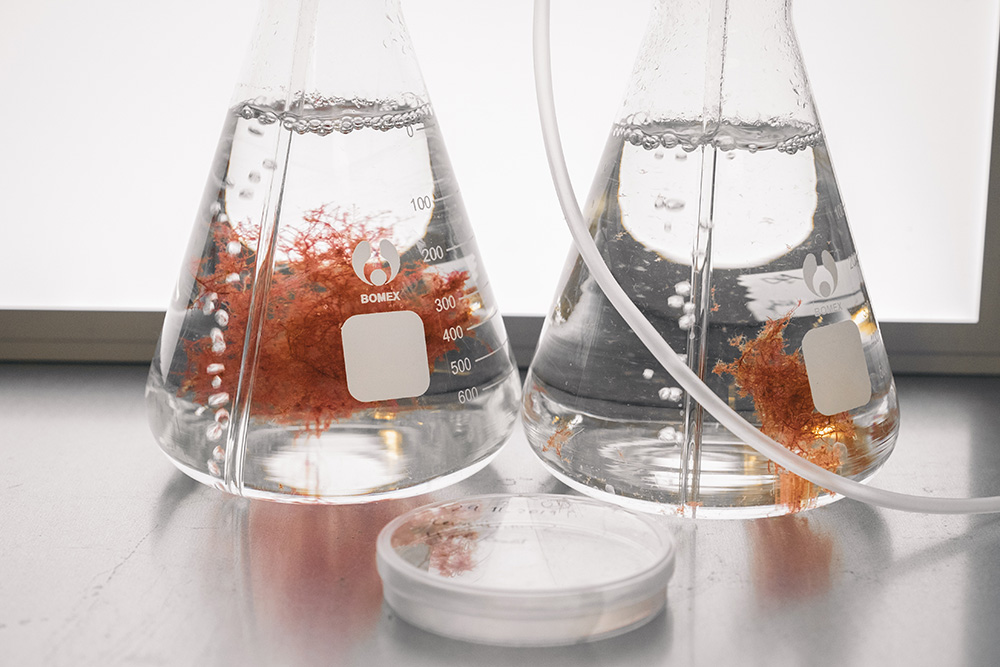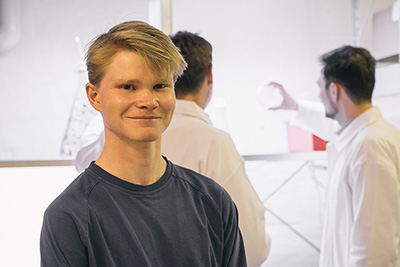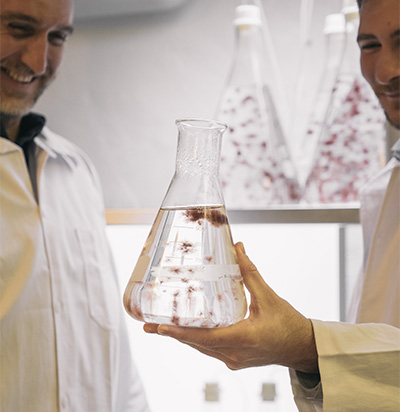Algae to make cows more climate-friendly

If cows were a country, they would rank 3rd in greenhouse gas emissions, but by feeding them a special type of algae you can reduce their emissions by up to 80 percent. Here is the KTH team setting the findings in motion.
It's been just a few months since Volta Greentech moved out from KTH Innovation’s co-working space and into their own lab on Kungsholmen, but it’s already time to go from lab-scale to production in Lysekil on the west coast of Sweden. Here, they will evaluate the best way of growing Asparagopsis taxiformis, the special type of algae that can reduce cows’ methane emissions by as much as 80 percent. The 1,5 billion cows in the world emit 5 percent of global greenhouse gas emissions, which is twice as much as air travel. The main ingredient in cows’ emissions, (to speak clearly, their burps and farts), consists of methane, a greenhouse gas that is roughly 30 times more potent than carbon dioxide.
Found the research on Reddit

Fredrik Åkerman, one of Volta Greentech’s founders, first read about the algae on the internet community Reddit about five years ago.
- I was in high school when I first heard about it, says Fredrik Åkerman. What I didn’t know then was that one of the researchers in the project, Ian Tuart, would move to Stockholm to join our team just a few years later.
Why aren't all cows already on this diet?
During an exchange semester at Berkeley College in the United States, Fredrik Åkerman heard that researchers there had started working on a similar project, and in a course he adopted the challenge of seeing if the research could be commercialized.
- I started calling researchers to see why cows weren’t already on this diet. It turned out that the major challenges were how to grow the algae, and how to convince farmers to invest in the method.
Finding a team
Back in Sweden, Fredrik Åkerman called Leo Wezelius, who was at that time studying Media Technology at KTH. Shortly thereafter they found molecular biologist Angelo Demeter, and it was around that time they first contacted KTH Innovation.
- This is the first idea that I’ve worked on full-time, says Fredrik Åkerman. Back in high-school I started selling bicycles online, and I’ve had plenty of “bad” ideas since, but Volta Greentech is the first one I’m fully committed to.
What happens in a year
The team behind Volta Greentech has had an intensive year. They’ve been interviewed in Dagens Nyheter , been on TV , and won the pitch competition at the exclusive tech conference Brilliant Minds . At the same time as all this attention, they’ve been hard at work commercializing what one year ago was pure research.
Together with their Business Development Coach Lykke Westgren, they’ve been developing strategies and working on understanding how to convince their customers to engage in the project. In March last year, they were accepted to the KTH Innovation pre-incubator program , where one perk is access to office space on campus.
- Being in the program together with others in the same situation is great. Having somewhere to get to work is so important at the beginning, and I’d say that without the co-working space, we would have been very lonely. It’s also great to have access to KTH Innovation’s coaches and legal counsel.
Opening their first plant
Running pilot projects on real farms is on the agenda in the coming months, with the goal to deliver more climate-friendly milk and meat to grocery stores.

Volta Greentech is research partner in a project run by the Swedish University of Agricultural Sciences, and they’re opening their first plant on the West Coast, where they are building prototypes to grow the algae. In the process, they’re using carbon dioxide captured from the heating plant in Värtahamnen, to give the algae extra speed in their growth.
- The water we use in our lab on Kungsholmen comes directly from the West Coact, since the algae need salt water to grow. I spent a whole day driving with a tank splashing in the back of the car, says Fredrik Åkerman.
In April, you can see Volta Greentech at KTH Innovation Demo Day, as the teams in Batch 9 graduate from the KTH Innovation pre-incubator program . Should others apply?
- Of course, would anyone say no to that? The program is great, especially since you can take it in parallel to your work or studies.
Visit Volta Greentech's website
Text: Lisa Bäckman

